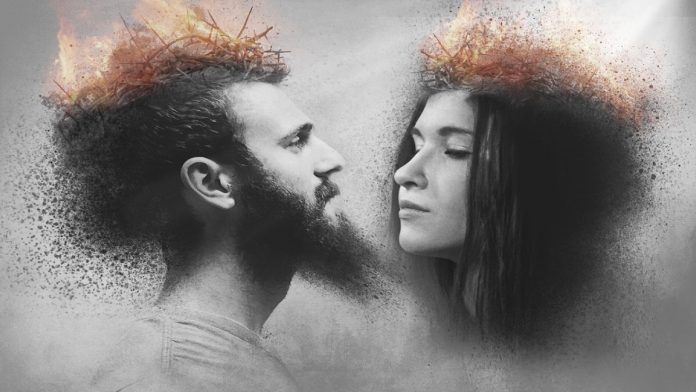Faces are a favorite subject for artists that how to sketch, but our desire for realism means we often answer or we get overly concerned about photo-realistic details. This results in the loss of creative touches and personality that a hand drawing can offer.
You will learn how to draw a face for free from life or a photograph. This allows your artistic personality, as well as the personality of the subject, to shine in your sketch.
While photorealist portraiture features fine surface parts. The sketched representation values a mixture of line and tone. You will use contour and cross contour to describe the form. The expression of a powerful mark is encouraged. Bringing a free hand brings your portraits to life.
Table of Contents
Start Sketching the Head Structure
We’ll start by scattering the basic head shapes – two overlapping ovals. The primary shape gives us the shape of the face, while a secondary shape describes the back of the head.
The exact position of your ovals may vary, depending on the angle of your caregiver’s head. So keep an eye out and ignore the detail of the features for now. Try to see only the basic shape of the head.
Next, we make a ‘note’ of where the features will go using the construction lines. Prepare this by drawing the line of the eyes. The bottom of the nose, and the general location of the mouth.
Also, be careful at this point to make sure the ears are properly placed. A beautiful picture is easily broken by non-mailed ears.
The ears usually fall where your two joint ovals intersect. It also relates to where the jaw bone connects to the upper part of the skull. This part is very important! A little extra care in this step will help you create great drawing ideas.
Sculpting Face Planes In Light and Shadow
Now we start the ‘search’ for different planes running across the face. Good lighting serves a great deal at this stage, as a natural, angled fall of light will emphasize the planes.
Looking for how shadows fall to create planes is similar to working as a sculptor. Imagine you are carving the face and instead of soft waves, you have hard edges. These will be alleviated later.
Too many people forget that as the light crosses planes, it creates a shape. Shapes are the raising chunks of a structurally sound and “sculptural” drawing. Everything has planes: hair, cheekbones, eye sockets, forehead, etc.
Draw planes as shapes and you are well on your way to understanding the symbolic form.
Establishing Sketch Values
Up to this point, we used lines to establish planar shapes throughout the portrait. Now some value can be added.
I use a carpenter’s pencil – a useful tool to quickly create large areas of value. Applying more pressure creates a deeper tone in the shadows or where the form turns.
Working with Line and Shape
We proceed to enhance the tonal value, using the side of the carpenter’s pencil to make a finer line or re-enforce the lines. It works great for drawing single hair or selecting contour lines.
Essentially, I try to etch in the drawing by using different line weights and by ‘pushing’ and ‘pulling’ into space using the pencil line.
Blocking Face Pencil
The cool drawings are progressing well, but the carpenter’s pencil doesn’t get the voice values as dark as I’d like. It’s time to introduce the 4B graphite pencil to push out the blacks and make the space deeper in the shadow areas.
To create a very dark space around the figure, it is better to use a dark graphite block for shading the final stage.
A Quick Note About Pencils
Artist pencils are not the same and there are many to choose from. If you are unsure, do some reading about the approaches of graphite and other drawing materials. Some experiments will assist you to determine what works most suitable for you.
For this exercise, 3b or 6b pencils are good alternatives for basic sketching. A pencilless pencil is a good replacement for a block of graphite when covering a larger area.
Sketch Analysis in Progress
It’s worth taking a moment to assess your progress from time to time. The sketch is so easy to overwork, and part of the trick is knowing when to stop!
I can consider the drawing finished at this point. However, setting the figure in a dark environment as in the picture can make the remaining values are generated in place.
Background Blocking
Using a block of graphite, start to block the value around and behind the figure. At the same time, find the areas where the dark value is echoed in the figure. If you see a relatively dark amount in a fold or deep shade, make sure that area is dark.
Be careful not to press hard on the dark values. Graphite can get too shiny or waxy and reflect too much light if these areas are overworked.
Finishing Sketch in Photoshop
Scanned in Photoshop, I use the filter> sharpen> smart sharpen tool to punching up pencil lines, crop, and save the image.
This type of sketch usually takes about an hour to complete. Yours may take longer, but if you keep training, your speed will boost and you will be more accurate. Remember that training is key to an artist’s development, so keep it up.
Source: Know Shunt


















